Now Reading: Music vs. Art Therapy for Substance Abuse: Creative Paths to Recovery
-
01
Music vs. Art Therapy for Substance Abuse: Creative Paths to Recovery
Music vs. Art Therapy for Substance Abuse: Creative Paths to Recovery

Recovery from substance abuse is not just a physical process. It is emotional, mental, and spiritual. Many people in treatment discover that creativity plays a powerful role in healing. Two popular forms of creative therapy are music therapy and art therapy. Each offers unique ways to process emotions, build coping skills, and reconnect with the self. In this article, we explore music vs. art therapy for substance abuse, how each works, and which may best support your recovery journey.
What Is Creative Therapy?
Creative therapy uses artistic activities to promote emotional healing and mental well-being. In substance abuse treatment, it helps individuals express thoughts and feelings that might be difficult to put into words.
Music and art therapy are both evidence-based approaches. They are led by trained therapists who guide individuals through exercises designed to foster self-awareness, reduce stress, and support recovery.
Stat: According to the National Center for Biotechnology Information (NCBI), incorporating creative arts therapies into addiction treatment significantly reduces anxiety and improves emotional regulation.
Music Therapy for Substance Abuse
Music therapy involves listening to, creating, singing, or moving to music. It helps people connect with their emotions, relax their bodies, and express inner struggles in a safe and non-verbal way.
Benefits of Music Therapy:
1. Emotional Release
Music can trigger deep emotional responses. It gives people a way to release grief, anger, guilt, or joy without judgment.
2. Reduces Stress and Cravings
Slow, rhythmic music can calm the nervous system. Group drumming or singing increases endorphins, reducing cravings.
3. Improves Communication
Lyrics can be powerful tools for expressing what words alone can’t. Songwriting allows people to tell their stories in a creative way.
4. Builds Self-Esteem
Creating or performing music helps people feel accomplished. It fosters confidence and a sense of identity.
Stat: A 2015 study in the Journal of Addictions Nursing found that participants in music therapy reported increased motivation to stay sober and lower levels of depression.

Art Therapy for Substance Abuse
Art therapy includes drawing, painting, collage-making, and sculpture. It helps individuals visualize emotions, explore inner experiences, and develop new perspectives.
Benefits of Art Therapy:
1. Enhances Self-Expression
For people who find it hard to talk about their past or feelings, art provides a visual language. It allows safe exploration of trauma and recovery.
2. Promotes Mindfulness
Creating art brings attention to the present moment. This mindful state lowers stress and reduces the risk of relapse.
3. Encourages Emotional Processing
Art offers a space to reflect on past behaviors, future goals, and emotional triggers. It supports deep healing and insight.
4. Rebuilds Identity
Addiction can strip away a sense of self. Through creative expression, individuals begin to rediscover who they are beyond their substance use.
Stat: A 2018 review in The Arts in Psychotherapy reported that individuals in art therapy showed significant improvement in emotional resilience and relapse prevention.
Comparing Music vs. Art Therapy for Substance Abuse
While both therapies use creativity to support healing, they offer different experiences. Let’s compare music vs. art therapy for substance abuse in key areas:
1. Form of Expression
- Music Therapy: Focuses on sound, rhythm, and lyrics.
- Art Therapy: Involves images, shapes, and colors.
2. Emotional Access
- Music Therapy: Taps into emotions quickly, especially through familiar or meaningful songs.
- Art Therapy: Encourages slower, reflective emotional processing.
3. Group Engagement
- Music Therapy: Often involves active participation like singing or drumming.
- Art Therapy: More individual, though some sessions may include group projects.
4. Physical Movement
- Music Therapy: May include movement or dance, enhancing body awareness.
- Art Therapy: Focuses more on hand coordination and visual skills.
5. Ease of Practice at Home
- Music Therapy: Easy to integrate through playlists or journaling about songs.
- Art Therapy: Can be done at home with simple supplies like paper, pencils, or paints.
Which One Is Right for You?
Choosing between music and art therapy depends on your personal comfort and what you hope to gain from the experience.
Music Therapy May Be Best If:
- You feel connected to music emotionally.
- You enjoy movement or rhythm.
- You find talking difficult but respond to songs.
Art Therapy May Be Best If:
- You prefer visual expression.
- You need a quiet, introspective outlet.
- You want to reflect on your journey through images.
You Can Do Both
Some recovery programs offer both therapies, allowing individuals to explore which works best for them. Blending music and art can provide a fuller, richer recovery experience.
Getting Started with Creative Therapy
You don’t need experience or talent to benefit from music or art therapy. All you need is an open mind and willingness to try.
Ways to Begin:
- Ask your treatment center if they offer music or art therapy groups.
- Use playlists that match your emotions and write about how they make you feel.
- Try sketching your thoughts at the end of each day.
- Explore local community centers that offer creative healing workshops.
Final Thoughts
When we explore music vs. art therapy for substance abuse, we find that both offer powerful ways to heal, express emotions, and build resilience. Whether through the rhythm of a drum or the brushstroke on a canvas, creativity connects us to ourselves and to hope.
You don’t have to be a musician or an artist to heal. You just have to be willing to explore. Recovery is not just about stopping something harmful—it’s about discovering something meaningful. Music and art can guide you there.
Sources:
- National Center for Biotechnology Information (NCBI). Creative Therapies in Addiction Treatment.
- Journal of Addictions Nursing (2015). Impact of Music Therapy in Recovery Programs.
- The Arts in Psychotherapy (2018). The Role of Art Therapy in Substance Use Recovery.

Kevin Fletcher is a seasoned writer with over 10 years of experience crafting engaging and informative content in the health, fitness, and wellness industries. Passionate about helping readers live healthier lives, Kevin combines research-backed insights with practical tips to inspire positive change.

























